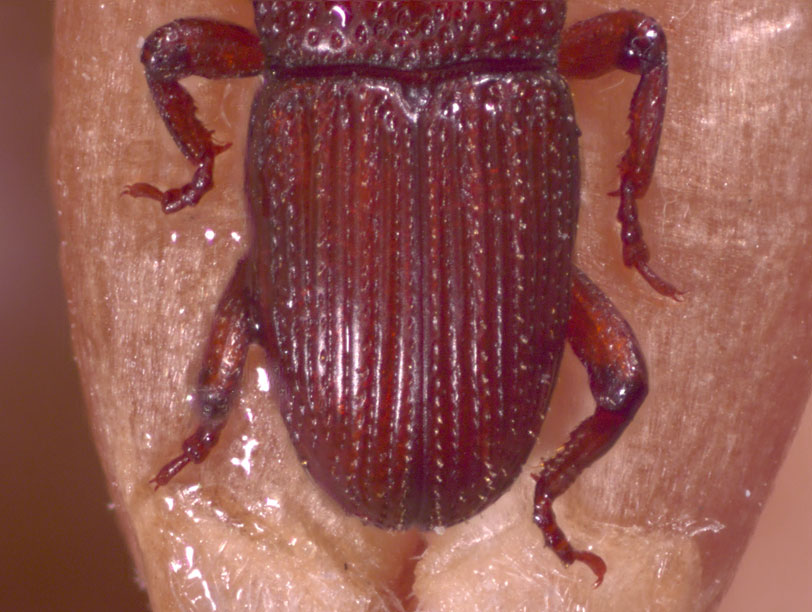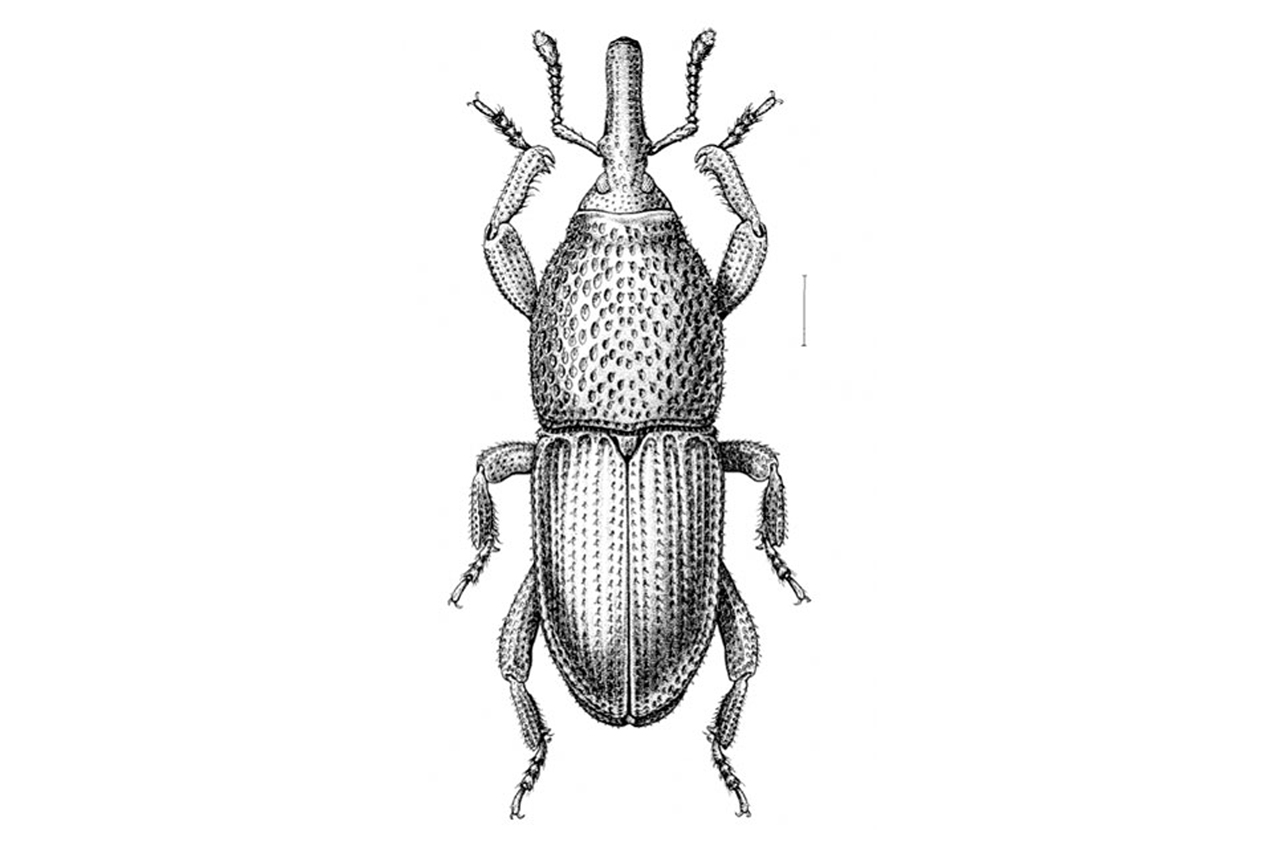Granary weevil
Sitophilus granarius (L.)
Classification
Primary pest; grain feeder
Order: Coleoptera
Family: Curculionidae
Acronym: SGR
Description
- Adults are uniformly coloured dark brown beetles, about 5 mm in length.
- Adults are unable to fly.
- Larvae are white, legless grubs that develop within the kernel and, as such, will not be detected in sieve samples or Berlese funnel samples.
Images
Similar species
- Rice weevil (Sitophilus oryzae)
- Maize weevil (Sitophilus zeamais)
Commodities affected
- All small grains (notably wheat, corn, rye, oats, barley, sorghum)
- Sometimes found in pasta, flour, meal and other cereals but is generally unable to breed in this environment
Signs of infestation
- Increased moisture levels and heating on the surface
- Seeds with round holes formed by exiting adults
Damage
- Adults feed on whole seeds or flour.
- Larvae develop inside seeds or pieces of seed or cereal products large enough to house larvae, but will not develop in flour unless it has been compacted.
- Weevils can achieve almost complete destruction at high densities.
- Feeding contributes to heating and infested grain is often damp due to moisture added by the insects’ metabolic processes.
How to control
Geographic range
- Is distributed worldwide
- In Canada, it is found in British Columbia, Alberta, Saskatchewan, Manitoba and is common in farm storage in southern Ontario.
Where found
- Only occurs where grain is stored; does not breed in field
Life history
- Females lay 150 eggs over their 7- to 8-month lifespan.
- Females individually lay eggs within kernels.
- Adults emerge from a large, oblong hole in kernel, compared to a smaller and rounder hole for rice weevil.
- Infestation can establish at temperatures as low as 15oC, but development is prolonged.
- Optimum development takes place between 26oC to 30oC at a relative humidity of 70%.
Not what you're looking for?
Start over again from the insect identification keys page.
"Page details"
- Date modified:












